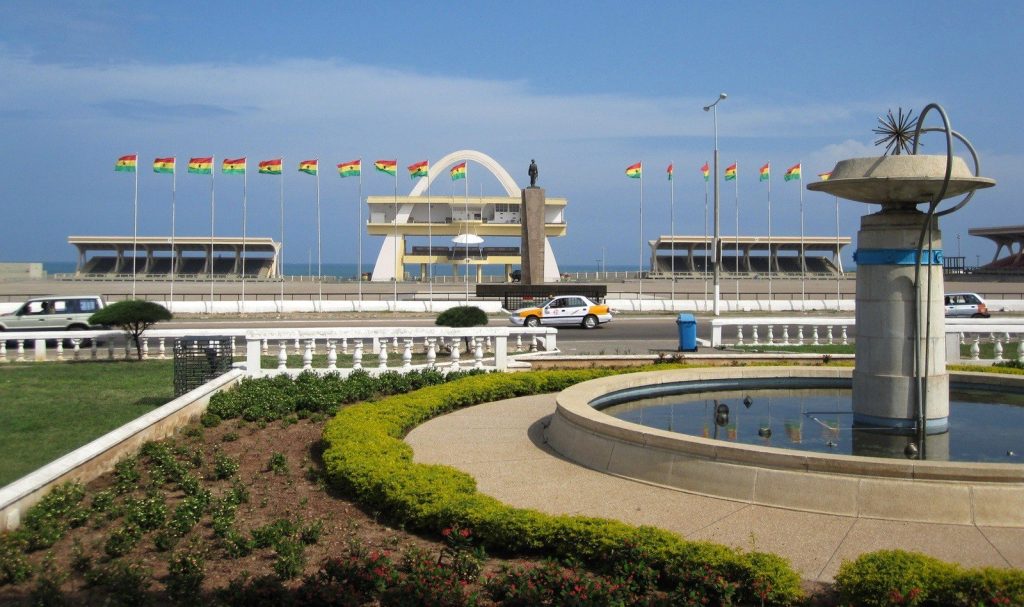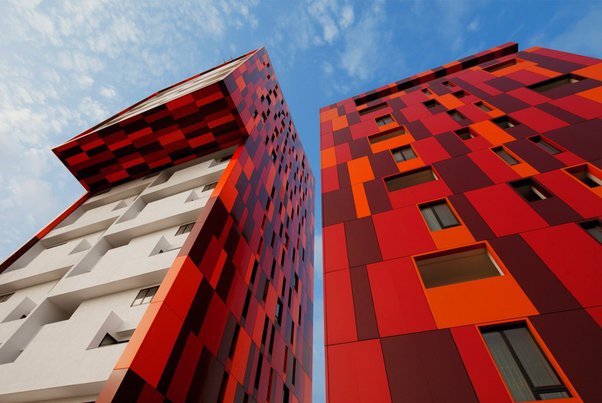The Impact of Infrastructure Development on Property Values in Ghana

As Ghana continues to grow and develop, infrastructure projects are playing a crucial role in shaping the landscape of its real estate market. At Loveridge Properties and Consult, we’ve observed firsthand how strategic infrastructure development can significantly impact property values, creating opportunities for investors and homeowners alike. In this blog, we’ll explore how infrastructure improvements drive property values in Ghana and highlight key projects making a difference. Enhancing Accessibility and Connectivity One of the most direct impacts of infrastructure development on property values is through enhanced accessibility and connectivity. New roads, bridges, and transportation networks reduce travel time, making previously remote areas more accessible. This increased connectivity attracts businesses and makes residential areas more appealing. Key Projects: Boosting Economic Activity Infrastructure development often boosts economic activity, leading to higher property values. The construction of new commercial centers, industrial zones, and business hubs creates jobs and attracts a workforce, increasing the demand for nearby residential properties. Key Projects: Improving Quality of Life Infrastructure improvements that enhance the quality of life for residents also contribute to rising property values. Projects such as new schools, hospitals, parks, and recreational facilities make neighborhoods desirable places to live. Key Projects: Urban Renewal and Development Urban renewal projects that revitalize older parts of cities can lead to significant increases in property values. These projects breathe new life into neighborhoods by improving infrastructure, renovating buildings, and enhancing public spaces. Key Projects: Conclusion At Loveridge Properties and Consult, we believe that understanding the impact of infrastructure development is crucial in making informed real estate investment decisions. The projects highlighted above are just a few examples of how strategic infrastructure improvements can enhance property values across Ghana. Whether you’re a potential investor or a homeowner, staying informed about these developments can help you capitalize on emerging opportunities in the real estate market. For more insights and personalized advice on real estate investment in Ghana, contact our Loveridge Properties and Consult team. We’re here to help you navigate Ghanaian real estate’s dynamic and ever-evolving landscape.
Urbanization and Real Estate: Strategies for Developing Smart Cities

A Loveridge Properties Perspective In today’s fast-paced world, urbanization is not just a trend but a profound transformation shaping the future of living spaces. As cities burgeon and sprawl, the demand for smarter, more sustainable urban planning and real estate development strategies intensifies. At Loveridge Properties, we are at the forefront of crafting smart cities that accommodate this growth and enhance the quality of life for their inhabitants. Here’s how we approach the development of smart cities: 1. Integrating Technology with Urban Planning Smart cities thrive on integrating technology to improve the functionality and livability of urban areas. At Loveridge Properties, we leverage innovative technologies such as the Internet of Things (IoT), artificial intelligence (AI), and big data analytics to create interconnected urban environments. These technologies enable efficient resource management, from energy usage to traffic control, making cities more adaptable and easier to manage. 2. Focusing on Sustainable Development Sustainability is at the heart of our smart city projects. We prioritize green building practices that minimize environmental impact and maximize efficiency. This includes using renewable energy sources like solar and wind and sustainable materials that reduce carbon footprints. By designing buildings and infrastructures that are both energy-efficient and environmentally friendly, we ensure that our cities can sustain not just current but also future generations. 3. Enhancing Quality of Life through Urban Design The design of a city significantly influences the well-being of its residents. We focus on creating spaces that promote health, safety, and community. Our urban designs incorporate ample green spaces, pedestrian-friendly pathways, and accessible public facilities. These elements are essential for fostering a sense of community and well-being among residents, making our cities more livable and lovable. 4. Encouraging Community Participation Smart cities are built with, not just for, their residents. At Loveridge Properties, we engage communities in planning, ensuring their needs and feedback are integral to the development strategies. This bottom-up approach helps tailor smart city initiatives to the unique characteristics of each community, resulting in urban environments that truly reflect the needs and desires of their inhabitants. 5. Implementing Smart Infrastructure Infrastructure is the backbone of any urban area, and smart infrastructure is crucial for smart cities. We implement advanced systems for water management, waste disposal, and energy distribution that are efficient and resilient to challenges such as climate change and urban growth. These systems have sensors and smart meters that provide real-time data, allowing for proactive management and maintenance. 6. Prioritizing Safety and Security Security is a paramount concern in urban development. Smart cities leverage technology to enhance public safety through integrated surveillance systems and emergency response solutions. By using AI-driven analytics, we can predict and mitigate potential security threats, ensuring a safe environment for all city dwellers. Conclusion At Loveridge Properties, our mission is to transform the urban landscapes of tomorrow through innovative real estate and urban development strategies that prioritize sustainability, technology, and community. As we continue to develop smart cities, we are committed to creating spaces that meet the demands of urbanization and enhance the quality of life for everyone who calls these cities home. Building a smart city is a complex, multifaceted endeavor that requires collaboration, innovation, and a deep understanding of technology and human needs. As we look to the future, Loveridge Properties remains dedicated to leading the charge in developing smart cities that are not just places to live but places to thrive.
Navigating the Millennial Homebuying Market: What Real Estate Agents Need to Know

Introduction: In today’s real estate landscape, understanding the preferences and behaviors of millennials is crucial for success. As the largest generation in the workforce, millennials are now entering the housing market in significant numbers, bringing with them unique expectations and priorities. For Home-buyers, staying ahead of the curve means mastering the intricacies of the millennial homebuying market. In this blog, we’ll explore key insights and strategies to effectively navigate this demographic shift and capitalize on the opportunities it presents. Understanding Millennial Homebuyers: Millennials, generally defined as individuals born between 1981 and 1996, have distinct preferences when it comes to homeownership. Unlike previous generations, millennials prioritize factors such as convenience, affordability, and sustainability. They value experiences over possessions and seek homes that align with their lifestyle choices and values. Additionally, many millennials are delaying homeownership due to factors like student loan debt, economic uncertainty, and changing employment patterns. Adapting to Millennial Preferences: To attract millennial homebuyers must adapt their approach to meet their unique needs and preferences. This may include: Engaging with Millennial Buyers: Building trust and rapport with millennial homebuyers requires a personalized and transparent approach. home-buyers ca Conclusion: As millennials increasingly become a driving force in the housing market, homebuyers have a unique opportunity to position themselves as trusted advisors and providers of homes that meet the needs of this demographic. By understanding millennial preferences, adapting marketing strategies, and fostering authentic connections, homebuyers can successfully navigate the millennial homebuying market and thrive in today’s competitive real estate landscape.
Luxury Living in Ghana; Real Estate Developments Tailored for Tourists

Ghana, often referred to as the “Gem of West Africa,” is renowned not only for its cultural heritage and varied landscapes but also for its growing luxury real estate sector aimed at sophisticated travelers in search of supreme comfort and luxury. In times, the country has experienced a rise in real estate projects focused on tourists, providing both investors and visitors with an opportunity to enjoy living surrounded by the charm and liveliness of Ghana’s distinctive locations. This article delves into the emergence of luxury living in Ghana, shedding light on some of the tourist-oriented real estate developments that are reshaping the hospitality scene. Exploring Ghana’s Upscale Real Estate Scene Ghana’s upscale real estate market has seen expansion, driven by factors such as economic stability, infrastructure growth, and a rise in tourism. Ranging from high-end condos and boutique hotels to resorts and private villas, the country boasts an array of luxurious accommodation choices tailored to meet the demands and tastes of wealthy travelers seeking top-tier comfort and exclusivity. The Appeal of Accra’s Exclusive Neighborhoods Accra, Ghana’s capital city and commercial center, stands out as a location for deluxe living within the country.Upscale neighborhoods such as Airport Residential Area, Cantonments, and East Legon are well known for their properties and top-notch facilities drawing in individuals and luxury travelers from all corners of the world. From high-rise apartments with city views to grand gated communities featuring expansive mansions and lush green surroundings, Accra’s exclusive areas redefine contemporary urban living across Africa. Discovering Coastal Charm in Ada Foah Located along Ghanas coastline Ada Foah offers a sanctuary for those in search of a mix of luxury and natural splendor. With its beaches, calm river estuaries, and scenic landscapes, this coastal haven has become a point for high-end real estate developments tailored to wealthy travelers seeking refuge from the urban hustle. Ranging from seaside villas and beachfront resorts to beach clubs and marina communities, Ada Foah embodies sophistication in Ghana’s luxury property market. Exploring the Allure of Cape Coasts Historic Estates Rich in history and cultural heritage, Cape Coast captivates tourists with its buildings, historic sites, and vibrant local traditions. Luxury real estate projects in this town honor its past while providing conveniences for discerning visitors. From hotels located in restored buildings to private estates with stunning views of the Atlantic Ocean, Cape Coast’s heritage properties offer a special mix of luxury and tradition for those interested in immersing themselves in the local culture. Embracing Luxury in the Volta Region The Volta Region, known for its rainforests, beautiful waterfalls, and peaceful lakeside scenery, is a paradise for eco-conscious travelers looking for luxurious experiences that prioritize sustainability. Property developments in this area focus on preserving the environment and incorporating eco elements into their designs, seamlessly blending with the surroundings while offering top-notch amenities and services. Whether it’s lodges nestled among trees, upscale safari camps with views of wildlife reserves, or wellness retreats surrounded by serene waters, the Volta Region embraces eco-luxury in harmony with nature. Conclusion: Setting a New Standard for Luxury Living in Ghana Ghanas end real estate sector is constantly evolving to meet the increasing demand for luxury accommodations and exceptional hospitality experiences. From the streets of Accra to the tranquil beaches of Ada Foah and from the charm of Cape Coast to the untouched beauty of the Volta Region, real estate developments aimed at tourists are reshaping luxury living standards across West Africa.By embracing ideas eco preserving cultural heritage, these advancements not only appeal to luxury travelers with refined preferences but also boost the tourism industry and economic well-being of the nation, establishing Ghana as a top choice for luxurious living in the area.
Exploring Ghana’s Hidden Gems: A Guide to Tourist-Friendly Real Estate Investment Opportunities

Ghana, known as the “Gateway to West Africa ” boasts a background, breathtaking scenery, and a growing tourism sector. While most tourists head to known spots such as Accra and Cape Coast there are hidden gems perfect for bold investors looking to tap into the real estate market. This article will uncover some of Ghana’s explored wonders. Discuss the promising investment opportunities available in these charming tourist spots. Discovering Ghana’s Untapped Potential While Ghana’s major cities attract a significant portion of tourist traffic, several lesser-known regions offer unique experiences and investment potential. From the lush greenery of the Volta Region to the historic sites of the Ashanti Region, each area has its charm and appeal to both local and international visitors. The Charm of the Volta Region Nestled in the eastern part of Ghana, the Volta Region is a treasure trove of natural beauty and cultural heritage. With attractions like Wli Waterfalls, Mount Afadja, and the Tafi Atome Monkey Sanctuary, this region has immense potential for eco-tourism and sustainable real estate development. Investors can explore opportunities to build eco-lodges, wellness retreats, and nature resorts that cater to travelers seeking authentic experiences amidst breathtaking landscapes. Cultural Riches of the Ashanti Region The Ashanti Region, located in central Ghana, is renowned for its vibrant cultural heritage and historical significance. Home to the UNESCO-listed Ashanti Traditional Buildings, as well as the bustling city of Kumasi, this region offers a wealth of opportunities for real estate investment. From boutique hotels showcasing traditional Ashanti architecture to heritage-themed resorts offering immersive cultural experiences, there’s no shortage of possibilities for investors looking to tap into Ghana’s rich history and traditions. Coastal Charms of the Western Region Ghana’s Western Region boasts some of the country’s most picturesque coastal landscapes, including pristine beaches, lush mangrove forests, and historic forts and castles. Towns like Axim and Elmina offer a tranquil escape from the hustle and bustle of city life, making them ideal locations for waterfront real estate developments. Whether it’s luxury beachfront villas, seaside resorts, or eco-friendly cottages, investors have the opportunity to capitalize on the region’s natural beauty and growing tourism appeal. Navigating the Investment Landscape Before diving into real estate investment in Ghana, it’s essential to conduct thorough research and due diligence. Understanding local regulations, market trends, and potential risks is crucial for making informed investment decisions. Partnering with reputable local developers, consulting with legal and financial experts, and networking within the industry can help mitigate risks and maximize returns on investment. Conclusion: Unveiling Ghana’s Hidden Real Estate Gems Ghana offers a variety of landscapes, a rich cultural history, and a thriving tourism sector that provides investment opportunities for real estate developers looking to take advantage of the country’s hidden treasures. Whether it’s exploring eco-tourism in the Volta Region, immersing in experiences in the Ashanti Region, or enjoying attractions in the Western Region, there are plenty of options for those willing to venture off the typical tourist paths. By promoting development, preserving traditions, and meeting the changing demands of visitors, investors can help boost Ghana’s tourism industry while also benefiting from their ventures in this dynamic and promising market.
Exploring Financing Options for Real Estate Investments in Ghana

Introduction:Real estate investment can be a lucrative venture in Ghana’s dynamic market. From residential developments to commercial properties, opportunities abound for investors seeking to capitalize on the country’s growing economy. However, financing is often a critical aspect of real estate investment. In this blog post, we’ll explore the various financing options available to individuals and businesses looking to venture into the Ghanaian real estate market. Conclusion:In conclusion, financing is a crucial aspect of real estate investment in Ghana. With a diverse range of financing options available, investors have the opportunity to access capital and pursue lucrative opportunities in the country’s vibrant real estate market. Whether through traditional bank loans, government schemes, private equity investments, or innovative crowdfunding platforms, individuals and businesses can find financing solutions aligned with their objectives and preferences. By exploring these financing options and leveraging available resources, investors can navigate the Ghanaian real estate landscape with confidence and seize promising opportunities for growth and prosperity.
Optimizing Tax Policies for Ghana’s Real Estate Development: Insights from Developed Nations

Introduction: Tax policies play a crucial role in shaping the landscape of real estate development in any country. In Ghana, like many other developing nations, effective tax policies can be instrumental in driving sustainable growth in the real estate sector. Drawing lessons from developed countries such as Canada, Dubai, USA, UK, and China, Ghana can adopt innovative tax solutions to foster investment, encourage development, and address societal needs. This blog explores the importance of tax policies in Ghana’s real estate development and suggests solutions inspired by successful models from around the world. Importance of Tax Policies in Ghana’s Real Estate Development: Solutions Inspired by Developed Countries: Implementation of Tax Policies in Ghana: Conclusion: Tax policies play a pivotal role in shaping the trajectory of real estate development in Ghana. By learning from successful models in developed countries and tailoring solutions to local contexts, Ghana can harness the power of tax incentives to drive sustainable growth, promote affordable housing, and build resilient communities for the future. Effective implementation, accompanied by robust governance and stakeholder engagement, is key to realizing the full potential of tax policies in Ghana’s real estate sector.
2024 Post-Pandemic Real Estate Trends in the USA

The real estate landscape in the United States is undergoing significant transformations as the nation emerges from the challenges posed by the COVID-19 pandemic. As we look ahead to 2024, various trends are shaping the housing market and influencing the way people approach property transactions. Drawing insights from reputable sources such as Forbes, PwC, US News, Architectural Digest, and Business Insider, let’s delve into the key post-pandemic real estate trends that are expected to define the market in the coming years. 1. Persistent Inventory Challenges: Despite the optimistic outlook for the housing market, one challenge that continues to persist is the limited inventory of available homes. According to Forbes, this scarcity of housing options is expected to drive competition among buyers, potentially leading to increased property values in desirable locations. 2. Steady Pace of Home Sales: Forbes suggests that the housing market is anticipated to maintain a steady pace of home sales. Despite inventory challenges, the demand for housing remains robust, reflecting a resilient market eager for property transactions. Experts predict a dynamic landscape with opportunities for both buyers and sellers. 3. Evolution of Remote Work Impact: The PwC Emerging Trends in Real Estate report highlights the ongoing influence of remote work on real estate preferences. With remote work becoming a more permanent fixture in many industries, individuals are increasingly seeking homes that cater to their desire for flexible and comfortable workspaces. This trend is influencing the design and functionality of residential properties. 4. Technology-Driven Market: As reported by Business Insider, technology continues to play a pivotal role in the real estate sector. Virtual tours, augmented reality, and other proptech innovations are becoming standard practices in property marketing. These technologies not only enhance the homebuying experience but also contribute to the efficiency of real estate transactions. 5. Shifts in Urban and Suburban Living: The Architectural Digest highlights the evolving preferences for urban and suburban living. Post-pandemic, individuals are reassessing their priorities, with some gravitating towards suburban or rural areas for a quieter lifestyle. The trend of decentralization and a renewed interest in suburban communities is expected to impact property values and development. 6. Affordability and Sustainable Living: US News emphasizes the importance of affordability in the housing market. As housing prices continue to rise, there is a growing focus on affordable housing initiatives. Additionally, sustainable and eco-friendly features are becoming more prominent in real estate developments, reflecting a heightened awareness of environmental concerns. conclusion In conclusion, the 2024 post-pandemic real estate trends in the USA reveal a market marked by resilience, technological innovation, and evolving preferences. While challenges such as limited inventory persist, opportunities abound for those navigating the dynamic landscape of property transactions. As we move forward, staying informed about these trends will be crucial for making well-informed decisions in the ever-changing realm of real estate.
Canadian Housing Crisis of 2024: An In-Depth Analysis

Introduction: As of 2024, Canada is in the throes of an unprecedented housing crisis that has swept the nation from coast to coast. The confluence of soaring housing prices and various socio-economic factors has created a formidable challenge for both aspiring homebuyers and renters alike. This blog seeks to illuminate the intricate facets of the Canadian housing crisis, draw insights from reputable sources, and explore potential solutions. Skyrocketing Housing Prices: A major catalyst behind the crisis is the staggering surge in housing prices. Metropolitan hubs like Vancouver and Toronto have witnessed exponential increases, rendering homeownership an elusive dream for a significant portion of Canadians. The insatiable demand for housing has far outpaced the available supply, propelling prices to unprecedented heights (Smith, 2023). Affordability Challenges: The widening affordability gap has erected formidable barriers, making it increasingly arduous for individuals and families to enter the housing market. Skyrocketing prices, combined with sluggish wage growth, have left a substantial segment of the population grappling to afford even basic housing, resulting in a surge in rental demand and exacerbating the overall crisis (Jones et al., 2022). Rental Market Strain: The already strained rental market faces additional pressure due to the housing crisis. Heightened demand for rental properties has led to increased rents, placing many tenants in precarious financial situations. The scarcity of affordable housing options has contributed to a growing number of individuals facing homelessness (Brown & White, 2024). Government Intervention: In response to the crisis, the Canadian government has rolled out various measures aimed at addressing housing affordability. Initiatives include boosting housing supply, introducing rent controls, and providing financial assistance to first-time homebuyers. However, the effectiveness of these measures remains a subject of ongoing debate among experts (Government of Canada, 2024). Socio-Economic Implications: The housing crisis’s socio-economic ramifications are extensive, with a pronounced impact on the wealth gap. Those fortunate enough to own property witness substantial gains, while others grapple with the challenge of securing stable housing. Additionally, the crisis impedes social mobility, making it difficult for younger generations to attain homeownership and build wealth (Economic Policy Institute, 2023). Community Advocacy and Solutions: Community organizations and advocates play a pivotal role in highlighting the severity of the housing crisis and advocating for comprehensive solutions. Calls for increased investment in affordable housing, stricter regulations on speculative real estate practices, and community-driven initiatives have gained significant traction, emphasizing the need for grassroots efforts alongside policy changes (Community Housing Coalition, 2024). Conclusion: The Canadian housing crisis of 2024 is a multifaceted issue with profound implications for individuals, communities, and the nation at large. Effectively addressing this crisis necessitates a concerted effort from all stakeholders, including government bodies, community organizations, and the private sector. Only through collaborative and innovative solutions can Canada hope to alleviate the challenges posed by the housing crisis and pave the way for a more inclusive and sustainable housing market.
Cost-Benefit Analysis: Importing vs. Purchasing Locally for Real Estate Development

Introduction: Cost-benefit analysis is a crucial process in the real estate industry, as it helps developers determine the most profitable and sustainable options for their projects. This blog will explore the benefits and drawbacks of importing materials and purchasing locally for real estate development, providing a comprehensive comparison between the two approaches. Importing vs. Purchasing Locally: A Comparison Conclusion: The decision between importing and purchasing locally for real estate development depends on various factors, including cost, environmental impact, supply chain risk, and local economic benefits. Developers should carefully consider these factors when making their decisions to ensure long-term sustainability and success for their projects. References:


